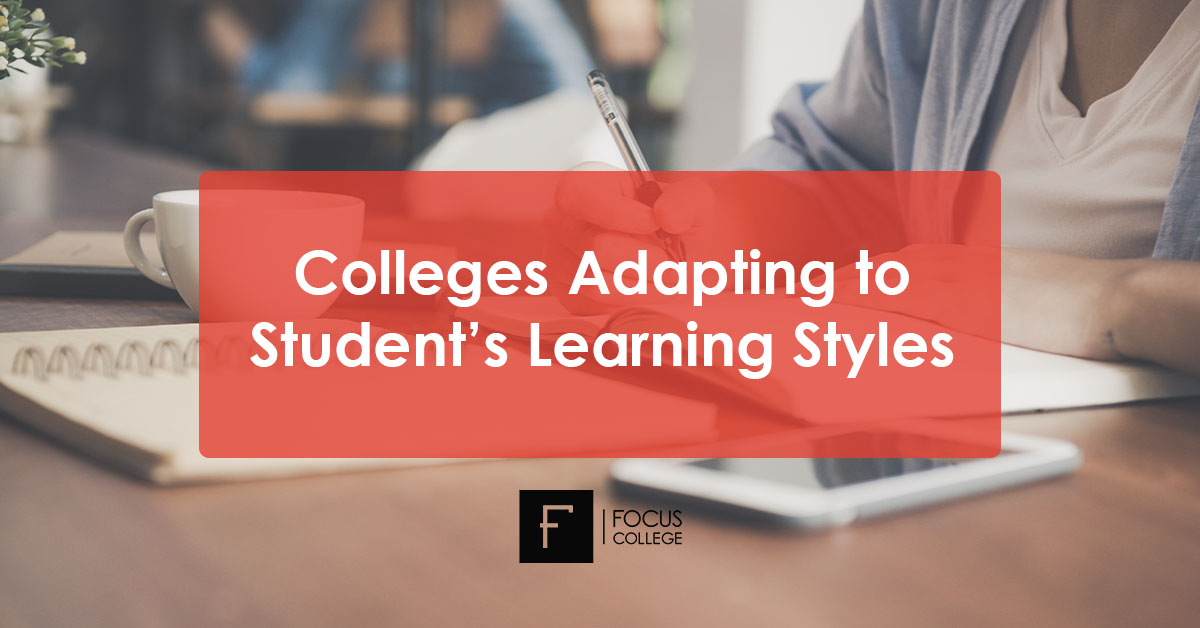In the constantly evolving realm of higher education, colleges have a responsibility not just to impart knowledge, but also to ensure that knowledge is absorbed, processed, and retained by students. To fulfill this mission, a growing recognition of each student’s learning styles has emerged as a significant factor. But why is it so crucial for colleges to adapt to these learning styles?
Table of Contents
Toggle
Adapting to Different Student’s Learning Styles
1. Recognizing Individuality
Every student is unique. They come from different backgrounds, have varied experiences, and think in diverse ways. By recognizing and accommodating different learning styles – be it visual, auditory, kinesthetic, or reading/writing – colleges send a strong message that every student’s individuality is valued and respected. Allowing individuals to be themselves with each student’s learning styles means more success for everyone.
2. Boosting Academic Success
Traditional lecture formats might work well for auditory learners, but they could leave visual or kinesthetic learners struggling to keep up. When teaching methods are tailored to cater to various learning styles, students are more likely to understand, retain, and apply the information they’ve learned. This, in turn, leads to better academic outcomes.
Focus College puts copious amounts of effort into adapting to different student’s learning styles because, at the end of the day, they want every student to be successful.
3. Encouraging Lifelong Learning
A student who feels understood and catered to is more likely to develop a love for learning. By fostering a positive learning experience in college, institutions plant the seeds for lifelong curiosity and the continued pursuit of knowledge.
4. Promoting Engagement and Participation
Interactive and varied teaching methods tend to engage students more effectively. If a college provides diverse ways for students to learn, it creates an interactive environment where students actively participate, ask questions, and seek answers.
Focus College’s Business Co-op program is a great example of this. This program allows students to excel in their own way. Participation doesn’t just have to be putting your hand up in class. With different student’s learning styles, you must be aware that some students want to put their hand up, while others would rather participate in more subtle ways.
Allowing students who prefer research to do the research, and allowing other students who prefer presentations to do presentations can help these students learn in a safe and comfortable way.
5. Preparing for the Real World
The real world is not one-size-fits-all. By experiencing various learning methods and styles, students are better prepared to adapt to different situations in their professional lives. They become more flexible, resourceful, and effective in problem-solving.
Different student’s learning styles mean that in the real world, students will learn the way they need to. The idea that a student will only learn the way a boss, manager, or instructor wants to teach just doesn’t fly anymore.
6. Reducing Dropout Rates
Students who feel disconnected or overwhelmed in the learning environment are more likely to drop out. By catering to their learning preferences, colleges can create a supportive environment where students feel understood and encouraged, thus reducing the likelihood of them leaving before completing their degree.
7. Enhancing Collaborative Skills
Understanding one’s own learning style also aids in comprehending the perspectives of others. This nurtures empathy and promotes effective collaboration, as students recognize and respect the diverse ways in which their peers process and assimilate information.
8. Leveraging Technology
With the rise of ed-tech tools and platforms, it has become even more feasible for colleges to cater to the myriad learning styles of their students. From interactive simulations for kinesthetic learners to infographics for visual learners, technology offers an array of options to make education more inclusive.
Characteristics of Different Student’s Learning Styles
Every student, whether in college or any other learning environment, brings a unique set of strengths, preferences, and challenges to the table. Recognizing this diversity, educators and researchers have identified various learning styles that students lean toward. Understanding these styles can significantly improve the educational experience, both for the student and the instructor.
There are even tests online to help you find out the type of learning styles you might have. With different student’s learning styles come different characteristics and tips. Here’s a dive into the most recognized learning styles that students may exhibit in a college setting:
1. Visual Learners
- Characteristics: These learners process and retain information best when it’s presented visually. Diagrams, charts, infographics, and other visual aids are their best friends.
- Tips for Visual Learners: Use color-coded notes, mind maps, and visual aids in your studies. If possible, convert textual information into diagrams or flowcharts.
2. Auditory Learners
- Characteristics: They excel when information is presented through sound. Lectures, discussions, and audio recordings work well for them.
- Tips for Auditory Learners: Attend lectures regularly, participate in group discussions, and consider recording lectures (with permission) to play back when revising.
3. Read/Write Learners
- Characteristics: These learners prefer information displayed as words. They thrive on reading content and writing down notes.
- Tips for Read/Write Learners: Frequently write summaries of your notes, use flashcards, and reread content to reinforce memory.
4. Kinesthetic Learners
- Characteristics: Kinesthetic learners learn best through experience, movement, and touch. Hands-on activities, experiments, and real-world applications appeal to them.
- Tips for Kinesthetic Learners: Engage in practical exercises and labs, take regular study breaks to move around, and if possible, relate your studies to real-life applications.
5. Logical (Mathematical) Learners
- Characteristics: These learners prefer using logic, reasoning, and systems. They like to understand the underlying principles behind the content.
- Tips for Logical Learners: Try to understand the ‘why’ behind concepts, create systematic lists and schedules, and engage in problem-solving exercises.
6. Social (Interpersonal) Learners
- Characteristics: Social learners thrive in group activities. They prefer to learn through discussions, group projects, and social interactions.
- Tips for Social Learners: Engage in study groups, participate in classroom discussions, and seek out group projects or team-based activities.
7. Solitary (Intrapersonal) Learners
- Characteristics: These learners prefer to work alone and use self-study. They’re typically very aware of their own thought processes and feelings.
- Tips for Solitary Learners: Find a quiet study space, set clear objectives for your studies, and frequently self-reflect on your learning journey.
Conclusion:
Identifying student’s learning styles can significantly enhance the learning process. While most individuals might find they resonate with multiple styles, there’s often a dominant style that stands out. By tailoring their study techniques to align with this style, students can maximize their academic potential.
For educators at Focus College, understanding these diverse learning styles means crafting teaching methods that are inclusive and adaptive, ensuring each student gets the best out of their college education. It is vital that colleges adapt to different student’s learning styles and ensure that every student has the greatest chance for success.


